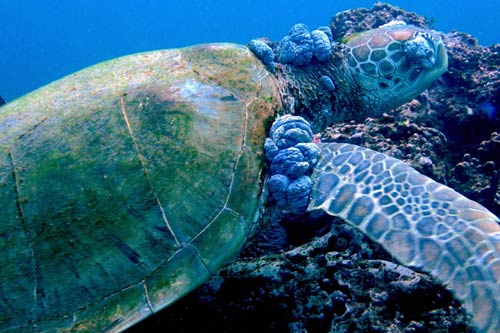
The impact of coastal and marine pollution on sea turtles comes in all shapes and forms. They include sound, thermal, photic, plastics, chemical, effluent, and others. The accurate evaluation of the effects of pollutants on development, survivor-ship, health, reproduction, and habitat condition/recovery is one of the main research priorities in sea turtle conservation. Read on for a short review of the most important ones.
Marine Debris
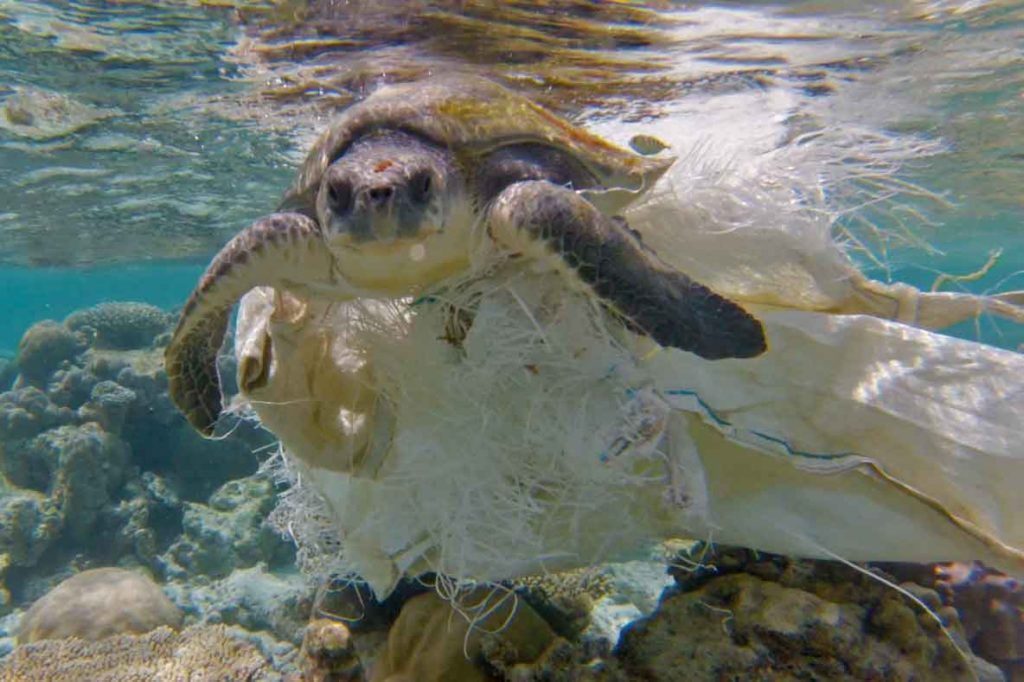
Most people associate pollution with the negative impact of plastics and other marine debris on sea turtle health and survival. Indeed, turtles ingesting plastic debris can suffer from intestinal blockage, which may in turn, result in malnutrition, reduced growth rates and even death. Considering that we dump the equivalent of one garbage truck of plastic into the ocean every minute, it is not surprising that a recent survey found evidence of sea turtle entanglement and ingestion of marine debris in over 43 countries.
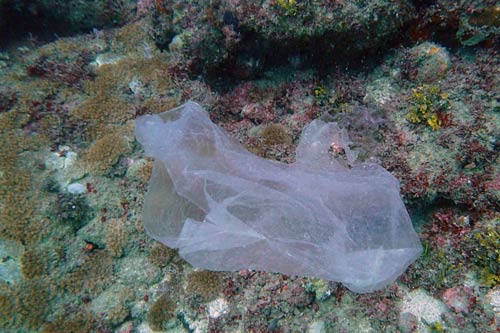
Sea turtles have been recorded to be entangled in anything from lost fishing nets, plastic twine and nylon fishing line, six pack rings from canned drinks, plastic packaging straps, plastic balloon string, kite string, plastic packaging and discarded anchor line and seismic cables. You can read an excellent world-wide review of ingestion of marine debris here. Moreover, accumulation of debris at nesting beaches has the potential to affect female nesting activity, embryo development and hatchling survival.
Oil Pollution And Contaminants
Pollutants include things like heavy metals (including mercury) and PCB’s. These may concentrate in the liver, kidneys, tissues and eggs of sea turtles. Other pollutants include petroleum products and agricultural and industrial runoff of contaminants, such as fertilizers, chemicals, nutrients, and untreated waste.
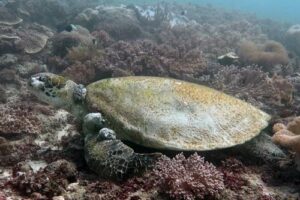
Sea turtles may be harmed by these pollutants through direct or indirect exposure. Pollutants building up in tissues over time could lead to immuno-suppression (often associated with fibropapillomatosis disease), disruption of endocrine function, respiratory inflammation, gastrointestinal ulceration, organ damage and reproductive failure in sea turtles.
Direct links to pollution sources, especially of non-point sources, are difficult to ascertain. Furthermore, toxicology (the vertical transfer from mother to offspring) as well as quantitative links between pollutant and impact, are currently little understood.
Oil spills and urban runoff of chemicals and fertilizers through drains and rivers from cities may contribute up to 36% of all marine pollution from oil. Oil spills tend to accumulate along the food chain and therefore affect sensitive habitats which sea turtles depend on. These include sea-grass beads, mangroves and coral reefs.
On a larger scale, oil from offshore spills concentrate along convergence zones (where currents meet), which are important areas for young sea turtle development. These may also accumulate on nesting beaches, thereby impacting nests, nesting females, and hatchlings.
Light And Noise Pollution
Sea turtles are extremely sensitive to both light and noise. Light and noise pollution therefore drive turtles away from critical foraging and nesting habitats. Unfiltered lights in coastal areas disorient hatchlings and deter adult turtles from nesting in the first place.
Persistent and abrupt low-frequency noise, such as seismic tests for energy exploration, disturbs turtles and may even damage their hearing. Read a thorough assessment of the problems of light pollution and how to avoid them in coastal areas here.
How ORP Is Taking Action Against The Impact Of Pollution On Sea Turtles In Kenya
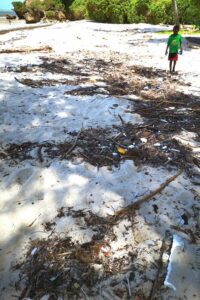
Our team is currently assessing the prevalence of plastic debris ingestion and fibropapilomatosis disease in the juvenile green turtle population in south Kenya.
Other initiatives include collaborating with partnering resorts in promoting sea turtle friendly practices, and organizing regular beach clean-ups.
Get involved and support ORP’s work to conserve sea turtles in the Indian Ocean today.

